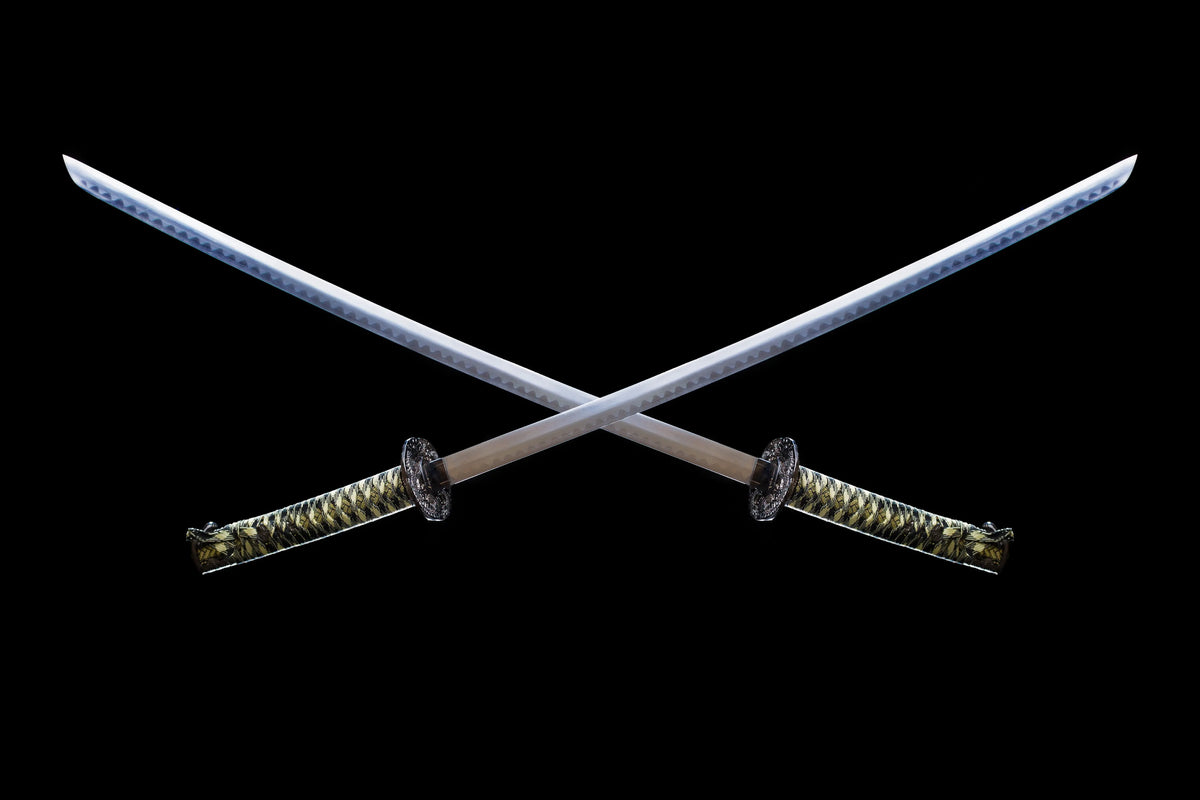
How To Pick The Perfect Katana
|
|
Time to read 4 min

You must be 18 years or older to access this website. Please confirm your age to continue.
You shall not pass!
As a UK Company, we take age verification and legal compliance seriously. Orders may be subjected to additional age checks
|
|
Time to read 4 min
The katana isn’t just a weapon; it’s a stunning work of art that embodies the Japanese spirit and showcases centuries of craftsmanship. Each sword is a unique masterpiece, created with meticulous care and infused with the very essence of samurai culture.
To truly appreciate the katana, it’s essential to dive into its history and the traditions that have shaped its evolution. From the legendary swordsmiths of the Kamakura period to the innovative techniques of the Muromachi era, the katana has undergone an extraordinary transformation, with each iteration refining the blade’s balance, edge, and overall beauty.
A katana is a complex and intricate weapon, with every part playing a crucial role in its performance and appearance. The blade, the heart of the sword, is forged from high-carbon steel, and its distinctive hamon (temper line) is a mark of the swordsmith's artistry. The tsuba , or hand guard, is not only functional but also decorative, often adorned with elaborate designs that reflect the owner's personality or social status.
The saya , or scabbard, is more than just a protective cover; it’s an extension of the sword’s identity, crafted with the same careful attention to detail as the blade itself. Meanwhile, the menuki , those small ornamental fittings on the handle, add a splash of elegance and individuality to each katana.
Whether you’re a seasoned collector or just starting your journey, finding the right katana can feel a bit overwhelming. With so many options available, it’s important to know what to look for to help you find the perfect sword.
Blade Quality and Construction
First things first, the quality of the blade is paramount. Seek out swords forged by renowned swordsmiths whose reputations are built on their ability to craft blades of exceptional strength, flexibility, and cutting power. We've got a huge range here on our store - allowing you to get a beginner starter Katana to a Samurai Master Sword.
Fit and Balance
The ideal katana should feel like an extension of yourself—perfectly balanced and responsive to your movements. Take note of the sword’s weight, length, and overall balance, as these factors will directly influence your ability to wield it with precision and control.
Aesthetic Considerations
While functionality is key, let’s not forget about how the katana looks! Consider the sword’s overall design, from the intricate tsuba to the elegant saya . Choose a katana that resonates with your personal style and reflects your appreciation for the artistry of Japanese swordsmithing.
Intended Use
Are you on the hunt for a katana to display, or do you plan to use it for practice and training? This distinction will guide your selection process—display swords might focus more on aesthetics, while practice swords need to be durable and well-balanced.
"As a samurai, I must strengthen my character; as a human being I must perfect my spirit"
Owning a katana is a real privilege, but it comes with responsibility. Proper care and maintenance are vital for preserving the sword’s integrity and ensuring its longevity. Regular cleaning, oiling, and storing it in a climate-controlled environment are crucial steps to keep your katana in pristine condition.
It’s wise to consult experienced collectors and swordsmiths to learn the best practices for katana care, and don’t hesitate to seek professional help when needed. By investing time in caring for your katana, you’ll be able to enjoy its beauty and power for generations to come.
The katana is more than just a sword; it’s a symbol of the samurai spirit and a testament to the enduring artistry and craftsmanship of the Japanese people. When you choose the perfect katana, you’re not just acquiring a physical object—you’re becoming a custodian of a rich cultural heritage, keeping alive a flame that has burned brightly for centuries.
As you hold your katana, take a moment to feel the weight of history in your hands and let the whispers of the past guide your every movement. Embrace the katana’s legacy and allow it to inspire you to cultivate the discipline, honour, and respect that have defined the samurai way of life.
The hamon is the visible temper line on the blade of a katana. It is formed during the quenching process and is a hallmark of the swordsmith's skill, indicating the blade's hardness and the cooling process used during its creation.
Yes, but it’s essential to choose a practice katana specifically designed for training, as these swords are often made from more durable materials and are balanced for ease of use. Avoid using display swords for practice, as they may not withstand the rigours of training.
Proper care involves regular cleaning to remove fingerprints and moisture, oiling the blade to prevent rust, and storing it in a climate-controlled environment. Consulting experienced collectors or swordsmiths for best practices is also recommended.
Yes, there are various styles of katanas, including the tachi (older style), uchigatana (modern samurai sword), and others like the wakizashi (short sword) and naginata (polearm). Each style has its own characteristics and intended uses.
